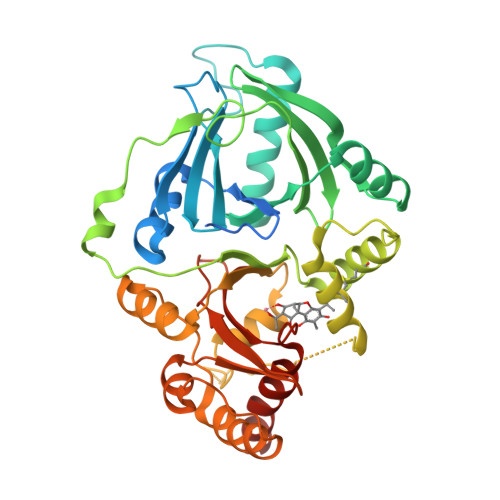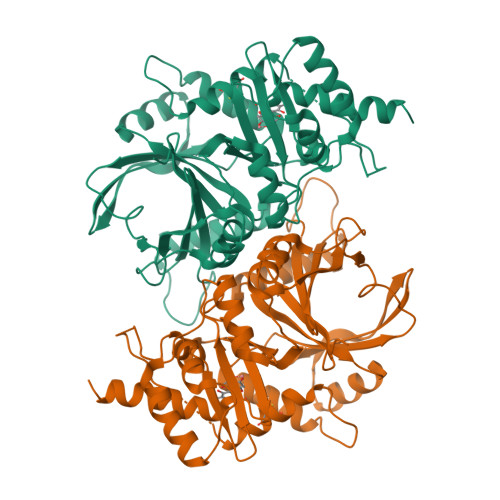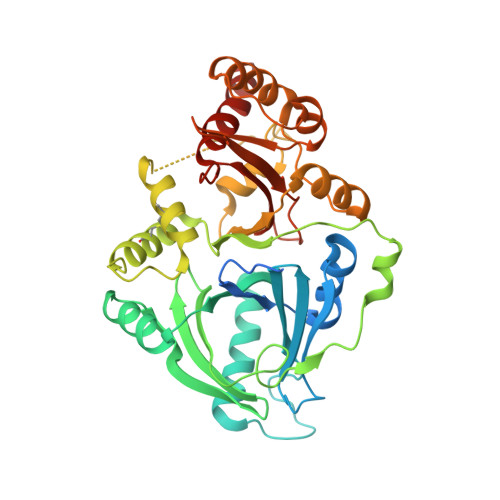Discovery and Development of 4-Hydroxyphenylpyruvate Dioxygenase as a Novel Crop Fungicide Target.
Yu, X.H., Dong, J., Fan, C.P., Chen, M.X., Li, M., Zheng, B.F., Hu, Y.F., Lin, H.Y., Yang, G.F.(2023) J Agric Food Chem 71: 19396-19407
- PubMed: 38035573
- DOI: https://doi.org/10.1021/acs.jafc.3c05260
- Primary Citation of Related Structures:
8JBW - PubMed Abstract:
Plant pathogenic fungi pose a significant threat to crop yields and quality, and the emergence of fungicide resistance has further exacerbated the problem in agriculture. Therefore, there is an urgent need for efficient and environmentally friendly fungicides. In this study, we investigated the antifungal activity of (+)-Usnic acid and its inhibitory effect on crop pathogenic fungal 4-hydroxyphenylpyruvate dioxygenases (HPPDs) and determined the structure of Zymoseptoria tritici HPPD ( Zt HPPD)-(+)-Usnic acid complex. Thus, the antifungal target of (+)-Usnic acid and its inhibitory basis toward HPPD were uncovered. Additionally, we discovered a potential lead fungicide possessing a novel scaffold that displayed remarkable antifungal activities. Furthermore, our molecular docking analysis revealed the unique binding mode of this compound with Zt HPPD, explaining its high inhibitory effect. We concluded that HPPD represents a promising target for the control of phytopathogenic fungi, and the new compound serves as a novel starting point for the development of fungicides and dual-purpose pesticides.
Organizational Affiliation:
National Key Laboratory of Green Pesticide, International Joint Research Center for Intelligent Biosensor Technology and Health, Central China Normal University, Wuhan 430079, P. R. China.


















